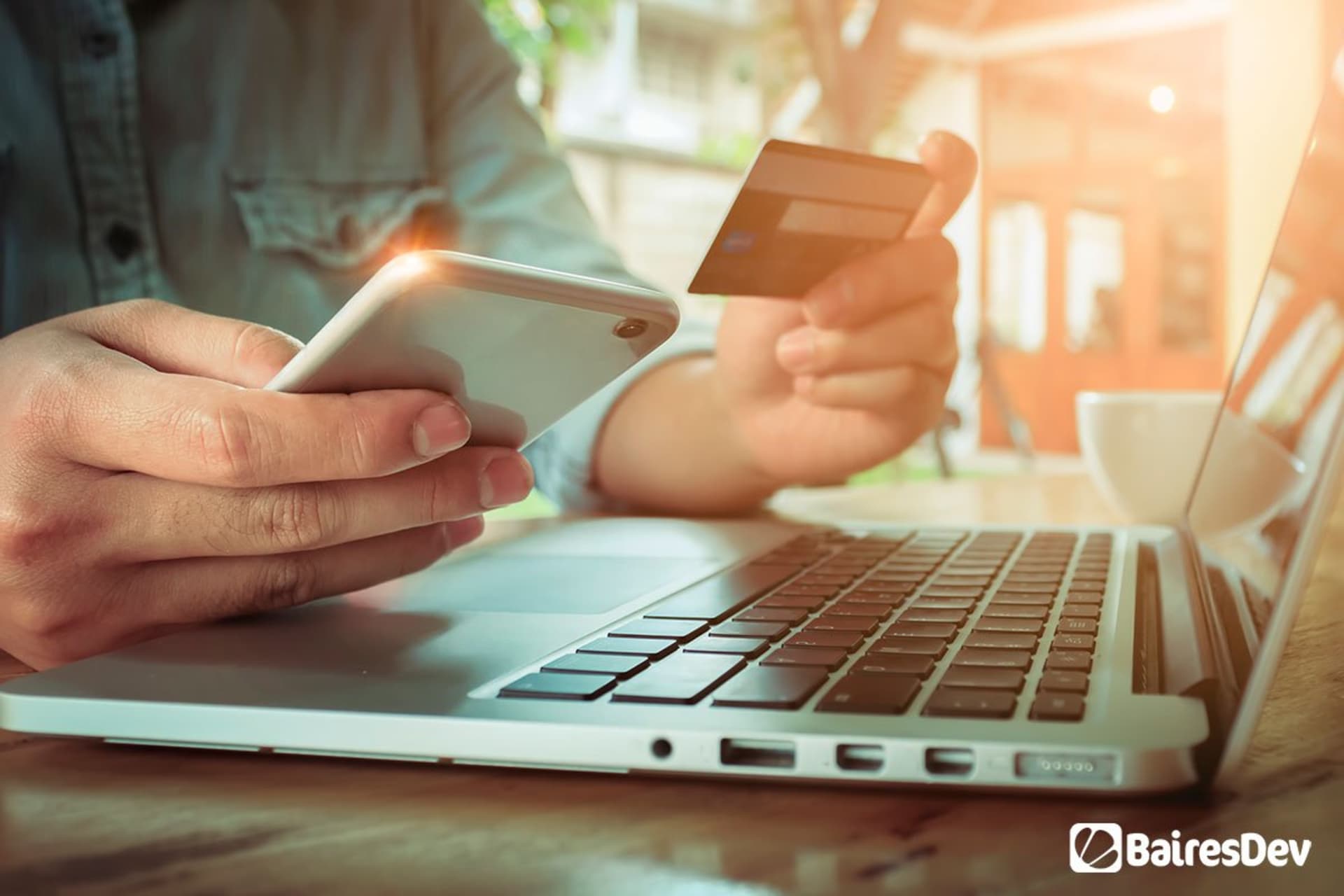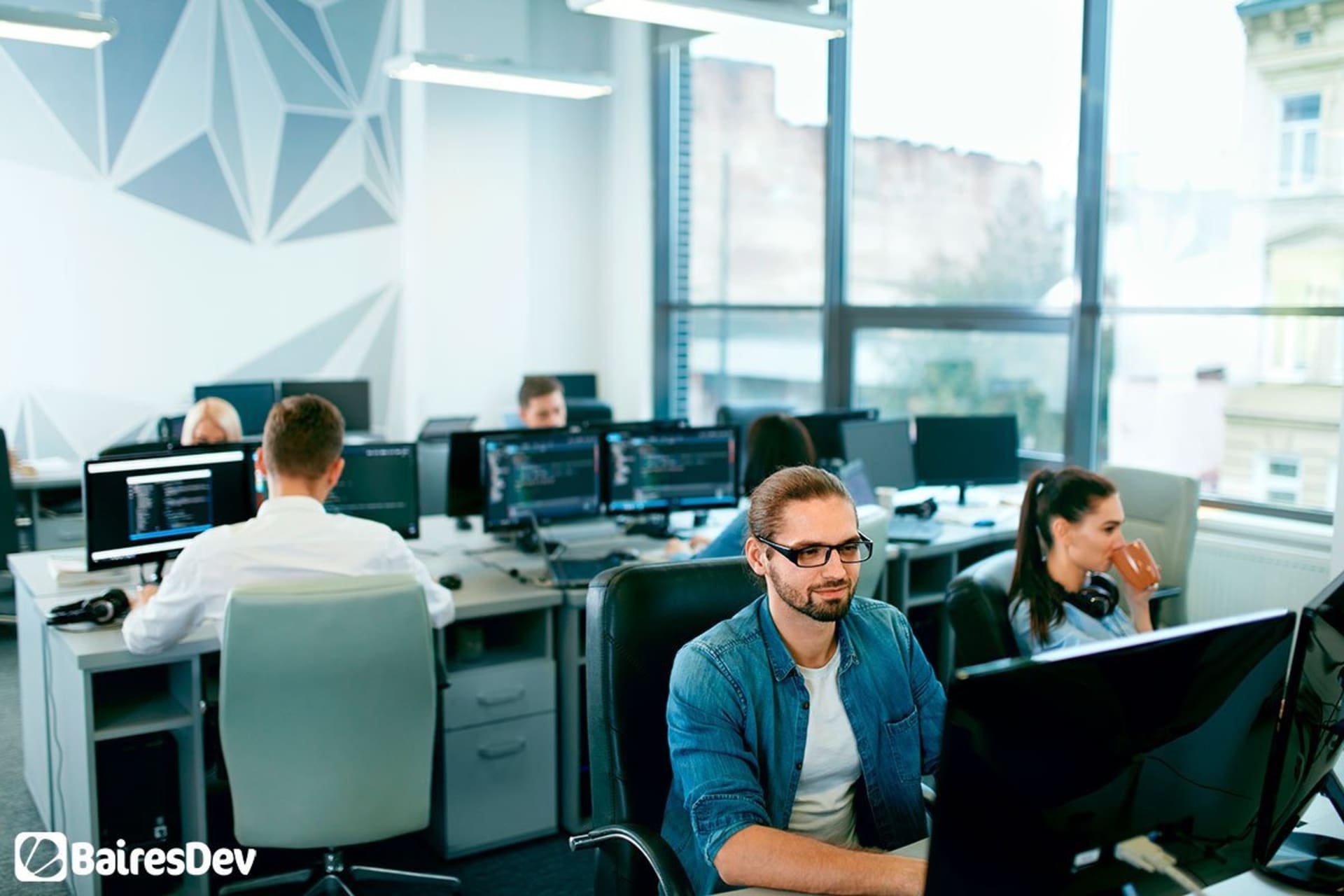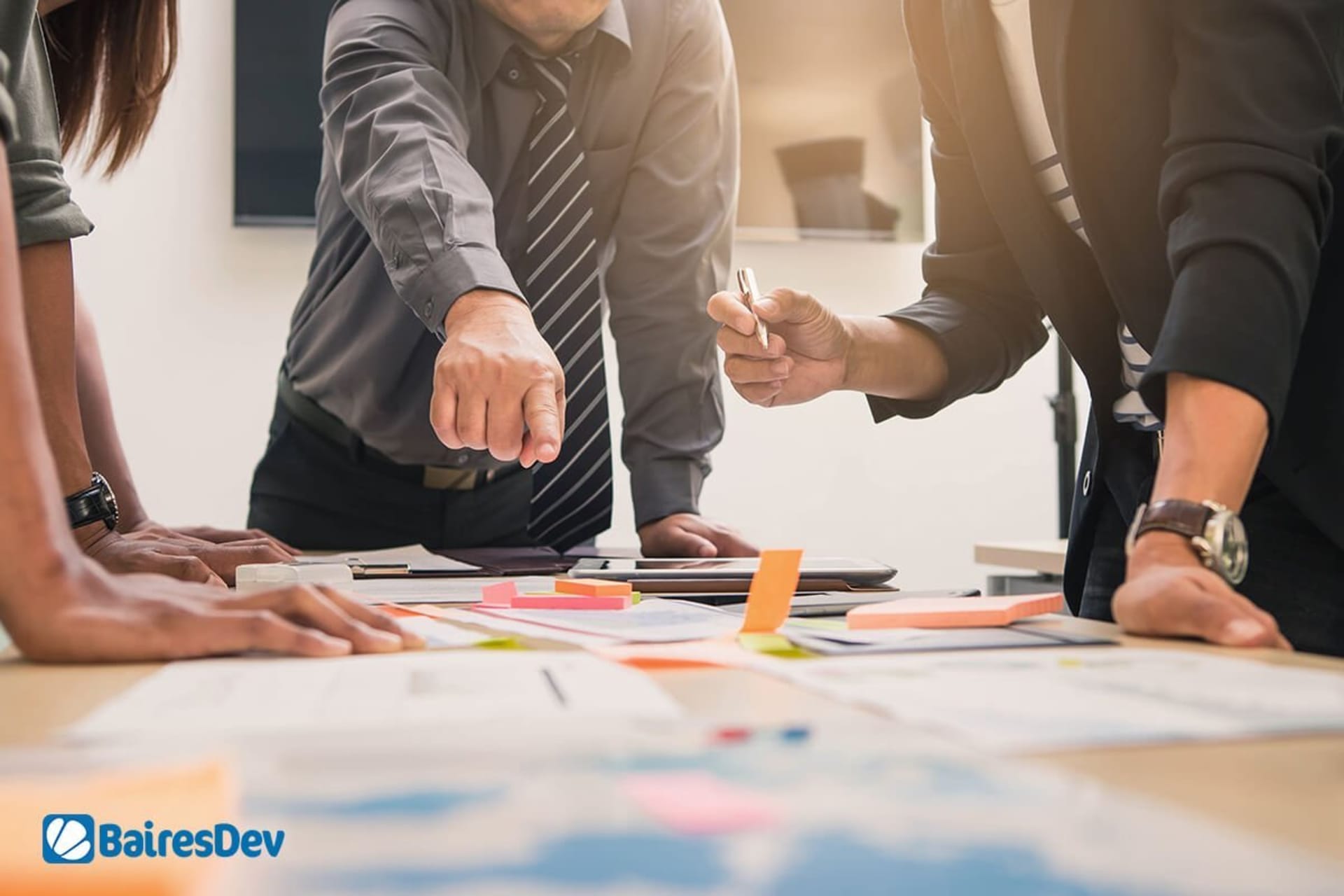Digital Transformation as a Priority
Technology is disrupting all industries, no matter how traditional. And even non-traditional sectors, such as retail, are experiencing change due to technological advancements. Retailers that invest in new technology are reaping the rewards in terms of creating more loyal customers, gaining access to customer wants, and understanding buying patterns.
A JDA/PwC Survey found that retail CEOs are making digital transformation their highest investment priority. Chinese retailers are leading the way, with 58% of these retailers implementing their defined digital transformation. U.S. retailers are not that far behind, with 40% ready to make digital changes.
There are three areas in which many retailers consider when shifting technologies: big data, artificial intelligence (AI), and the Internet of Things (IoT). The use of big data often lends itself to predictive analytics, the practice of using historical and current data to make predictions for the future. Predictive analytics make retailers incredibly competitive in the market, which is why many have chosen this route. AI and IoT technologies, however, are quickly gaining traction in the retail sphere as well. Big Data, AI, and IoT all have advantages and a part in revolutionizing the retail industry.
Big Data and Predictive Analytics in Retail
The predictive analytics software market is booming. The market is expected to grow at an annual rate of 21% between 2016 and 2022, reaching $10.95 billion by 2020. There are many use cases for predictive analytics in retail, which give companies a competitive edge in the market.
Understand and target customers
In retail, it’s vital to understand customers to create targeted campaigns. Now more than ever, shoppers want personalized suggestions, which means retailers must use data to provide this. Retailers need information about their clients and self-reporting often fails. Relying on big data, however, provides retailers with the information they need.
Retailers can collect transaction, interaction, and external data. Transaction data is information about a specific transaction, including when the person purchased, what they purchased, and how they paid. Interaction data is how the person interacted with the website or social media channels, i.e., what they clicked. External data is all of the data outside of the shopping experience or the external factors that helped make the purchase. For example, holiday season or traffic patterns outside of a physical location. All of this data gives a global view of the customer which retailers can then use to create targeted campaigns.
Using all of this data, retailers can figure out who is likely to buy and when and create unique offers. 59% of online shoppers said that it’s easier to find interesting products on personalized online retail stores. Predictive analytics can also forecast which buyers are likely to make repeat purchases. Retailers can send these buyers offers such as discounts or free shipping.
Data scientists are working hard on predicting customer churn using big data. In the next few years, retailers will know when a customer is likely to purchase from a competitor. They can then take actions such as offering a huge discount to keep the customer loyal. And whereas now predictive analytics helps retailers plan for the behavior of demographic groups, soon retailers will know behaviors (and future behaviors) of individual shoppers.
Optimize pricing
Businesses want to sell, which means they must price items correctly. The price should not be too low that they lose money but not too high where the customer will not purchase. Predictive price analytics takes into account historical product pricing, consumer interest in the product, inventory, competitor pricing, as well as margins to calculate the best price for each item. This will give the retailer a price that produces maximum profit and still sells.
All retailers have competition, and it’s crucial to watch their pricing as well. Predictive analytics can tell retailers when they can undercut the competition with prices and when they cannot. With predefined features set in place, predictive analytics take care of price adjustments with real-time monitoring of competition.
Inventory management
Managing inventory can be stressful for many retailers, especially those who own multiple locations. Organizing which stores need what is complicated, and without data, it’s a guessing game. Especially around holiday seasons, retailers do not want to end up with too much stock of certain items. If this happens, retailers usually have to put these items on sale after the holidays and take a loss. Retailers don’t want to have too little of an in-demand item because then customers will shop with the competition.
To solve the inventory problem, retailers can use predictive analytics to forecast inventory needs. Smart inventory management takes into account current stock, future needs, promotional activity, pricing, and more to order the correct amount of items. This style of inventory management ensures managers fill orders without too many leftover items.
Inventory is another area where predictive analytics can grow. Right now, big data helps retailers organize their inventory as to not have too much or too little left in stock. In the next five years, however, data scientists will create software to predict where companies can generate more revenue. Looking at buying patterns and predicting the market, retailers will soon know, for example, that their accessory line will make them the most money and their shoe line will cost them revenue.
Company forecasting
Predictive analytics provides accurate revenue forecasting so retailers can understand income at any point in the year. Retailers will no longer have to guess what will happen during slow months or busy seasons. Predictive analytics can accurately forecast sales, which will then help businesses plan accordingly.
Another area changing the shape of retail is artificial intelligence (AI). AI technology also relies on big data and can help in revolutionizing the buying experience.
Improving Retail with AI
Global spending on AI in the retail industry is expected to grow to $7.3 billion per year by 2020. The report breaks down the expected spending to three technological tools expected to grow in importance. Customer service and sentiment analytics will grow by 54%, AI-based automated marketing by 30%, and demand forecasting by 16%. There are many use cases for AI in retail. Here’s what companies are currently using and where this technology will take the industry.
Augmented reality (AR) and virtual reality (VR)
AR and VR are two types of technology that harness the power of AI to change the user’s perception and there are many use cases for both in the retail industry.
Augmented reality
Let’s look at examples of this technology in action. Ikea launched an AR feature so that users can see how furniture looks in their homes and spaces. This app, called Ikea place, features over 2,000 items from the Ikea catalog. Users can see how furniture looks right in their homes using just their camera. Fewer customers will have buyer’s remorse or become frustrated that an item doesn’t fit after using this app.
Sampler by CONVERSE is another popular AR application where users can see what shoes look like on their feet. Users choose a pair of shoes they like on the app, point their iPhone at their feet, and they’re wearing the shoes virtually so they can decide if they want to purchase or not.
Retailers will likely use AR functionality in advertising in the near future. Imagine using an AR app and an ad for a sofa comes up, showing exactly what it will look like in your house with pricing and shipping information right on the screen.
Immersive product catalog visualization will grow dramatically in the next five years. Shoppers will experience products (whether virtually trying them on or viewing them in their home) before buying.
Virtual reality
Let’s look at the VR world. Lowe’s has a Holoroom app where customers can design a room in their home and turn it into a YouTube 360 video. Depending on the store, users are offered Oculus Rift or Google Cardboard to experience their room virtually.
TOMS shoe brand provides visitors with a VR experience in the store as well. Viewers can “travel” with TOMS in Peru, known as one of the giving trips, in a four-minute 360-degree virtual film. TOMS CEO Blake Mycoskie said:
“The VR experience is unlike any other and is the greatest technology I’ve seen to create empathy. To truly understand what someone goes through, it helps to walk in their shoes. If you can’t be there in person, VR is the perfect technology to share someone’s story. It’s an immersive technology, and with the powerful AT&T network, it’s something you can experience from virtually anywhere.”
Studies found that 62% of shoppers are interested in trying virtual reality shopping. 35% of customers said they would shop online more if they could “try on a product virtually.” The same study noted that 63% of customers expect VR in their shopping experience in the future. AR and VR technologies blend the offline and online experience for buyers, and this technology will undoubtedly grow in the future.
Most AR and VR experiences are kept in-stores, for now. This may be deliberate to keep shoppers coming to brick and mortar shops, but this trend will end soon. In China, Alibaba already launched a virtual mall where buyers can browse items without leaving the couch. Thinking about how quickly shoppers embraced online shopping, it should come as no surprise that shoppers will embrace VR shopping as well.
What does this mean for physical locations? They have to either change or close down. In the next five years, we’ll likely see non-technical physical locations close. If these stores cannot offer buyers unique experiences using VR or AR, then they will lose customers to the competition. Think about how frustrating it is to drive to the mall, wait in line, and deal with crowds when instead you could shop from home, still trying on outfits and comparing prices. What retailers need to focus on is incorporating this technology into physical locations to keep customers happy and engaged.
Chatbots
Chatbots, powered by AI technology, are on the rise. By 2020, AI bots will power 85% of all customer service interactions by the year 2020. Big brands have led this charge, but SMEs are catching on as well. A prime example is back in 2016 when Taco Bell launched TacoBot. This tool allows users to place an order at Taco Bell without leaving their device. This AI bot can even organize group orders and recommend menu items. Chatbots let brands connect with the customers, and nowhere is that more necessary than in the field of retail.
IBM’s Watson is a leading AI tool many retailers are using. 1-800-FLOWERS.COM used this technology to launch “GWYN” (Gifts When You Need), an AI-powered online gift concierge. GWYN interacts with online customers using natural language. It can help lead buyers through the online buying experience, with personalized recommendations.
In 2019, we’re likely to see some voice bots become mainstream. Both voice and chatbot technology have made significant strides this year, so the likely development next year is bringing these two technologies together.
Brands all over the world are using AI to launch conversational interfaces in the form of chatbots to connect with customers, offering personalized recommendations and help in any online capacity. Many of these bots use machine learning (ML) algorithms that improve with time and experience. Through ML, brands can access insightful data and use this information to enhance the user experience.
The Internet of Things in Retail
The IoT is sweeping across numerous industries and improving processes along the way. In retail, connected machines are helping to improve the manufacturing process, creating a smarter way to manufacture items. 77% of retailers believe that IoT solutions help improve customer experiences. The concept of a “smart store” is coming to fruition. Additionally, digital displays/“smart signage” are creating more opportunities in retail.
Smart shelves
Smart shelves systems are incredibly useful for large stores. This system works by placing an RFID tag on each item (which includes a microchip antenna) that transmits data to the RFID reader. Then, managers can monitor if a shelf is running low on a particular item or if a product is about to expire. Smart shelves can also track customer behavior, allowing managers insight into fast-moving products. This technology also helps prevent theft by tracking each item.
Combining IoT and predictive analytics technology, customers will have an entirely new shopping experience. For example, an IoT smart shelf can alert when a certain item is running low. Using predictive analytics, a system could find all customers that buy that item weekly. The system could then text the customers that they are out of that item but notify that a nearby store has that item.
Going even one step further, a connected car driving past the location where the item is in stock could use voice technology to alert the buyer to stop at that location to purchase the item. While that technology isn’t quite ready yet, we’ll likely see it in the next five years.
Beacons
Retailers are using beacons to get customers into their physical stores. Beacons are devices that use Bluetooth technology to automatically send a push notification to a customer’s smartphone when they are in the surrounding physical area of the store. Many retailers use Beacons to lure customers into the store with promotional codes or timely offers.
Intelligent displays
Digital signage is popping up all over smart cities. These signs use LCD, LED, or other technology to display videos, images, text, and more. Retailers are using these connected signs because advanced technology allows for hyper-targeted campaigns. These signs can read information such as a person’s demographics and display a targeted ad. If a woman and a child walk by, an ad can display discounts at a kid’s store, for example. Used in-store, intelligent displays can track customer data and change prices in real-time.
New Technology is the Way Forward in Retail
More and more consumers are demanding advanced technology in their shopping experience, and to stay competitive, retailers must comply. It’s likely that only the large retail brands are investing in all three (big data, AI, and IoT). However, smaller brands are starting to use some of these technologies to provide a better customer experience.
It’s no longer just a mobile experience customers want. Now, they want an altered reality or connected experience when shopping online and offline. Retailers, in order to provide customers with experiences, must use big data. Big data allows retailers to know which technology to invest in, rather than guessing and wasting resources. Those retailers that decide to invest in these technologies will gain market competitiveness and loyal brand followers. This, in turn, will boost sales and brand awareness.







